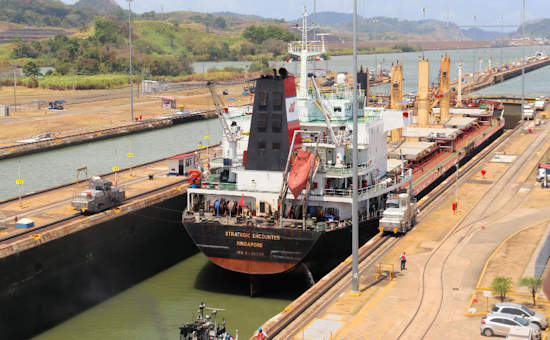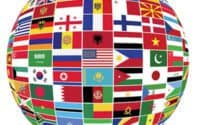Panama Canal Crisis: Congestion, Drought, and Impact on Global Trade

The Panama Canal, an essential lifeline for global trade, is currently facing a crisis. A staggering 154 vessels are lined up, waiting their turn to traverse the canal, with an average waiting time of a troubling 21 days. This congestion is a clear result of a series of events that began with severe drought conditions in the region.
* Please send feedback/suggestions to editor @ shipuniverse.com
The Heart of the Crisis: Water Conservation and Drought
Since the spring, ongoing drought conditions have led to significant challenges in the canal’s operation. The Panama Canal Authority (PCA) has been forced to implement water conservation measures, such as reducing the number of pre-booking slots for Panamax vessels, the largest ships that can navigate the canal. Starting from August 8 to August 21, the booking slots have been reduced from 23 to just 14 daily. Before these measures, the canal saw a daily transit of between 34 to 36 ships. That number has now been limited to an average of 32, with ships without reservations having to wait their turn, leading to the current bottleneck.
U.S. Dependence on the Panama Canal
The congestion is particularly alarming for U.S. shippers. The U.S., being the most significant user, sees 73% of its commodity export and import containers traveling through the canal. In terms of value, about $270 billion in cargo moves through this waterway annually. Furthermore, 40% of all U.S. container traffic finds its way through the Panama Canal each year.
The Broader Impact: Shipping Delays and Costs
The implications of these delays are profound. Marine shipping experts caution that the situation is bound to deteriorate further before it sees any improvement. The delays, coupled with additional restrictions like vessels needing to be 40% lighter due to low water levels, are causing significant disruptions. Vessels are being forced to unload their cargo at other ports, potentially requiring a different vessel to complete their journey.
Global Repercussions and Future Concerns
The last time the canal faced such a backlog was in 2022, during the aftermath of the pandemic and geopolitical tensions involving Ukraine and Russia. Given the canal’s strategic importance, any disruption in its operations has a cascading effect on global trade.
Businesses may incur additional costs as ships are forced to wait or take alternative routes. For instance, ships originating from the ASEAN region and some Southern China ports might consider using the Suez Canal, but this can add up to two weeks of transit time. This extended time, plus additional fuel costs and the potential need for multiple vessels, can increase freight charges. These expenses might be passed on to consumers, signaling potential price hikes in various sectors, including apparel and footwear, as the holiday season approaches.
Moreover, this congestion is driving diversions in the energy sector. Clean tankers, particularly those transporting refined petroleum products, are actively avoiding the Panama Canal. A notable shift can be seen in their preference for routes to the Atlantic Basin.

Do you have a Maritime Product or Service that may be of interest to Shipowners? Tell us about it here!
Do you have feedback or insights? Please reach out to editor @ shipuniverse.com




